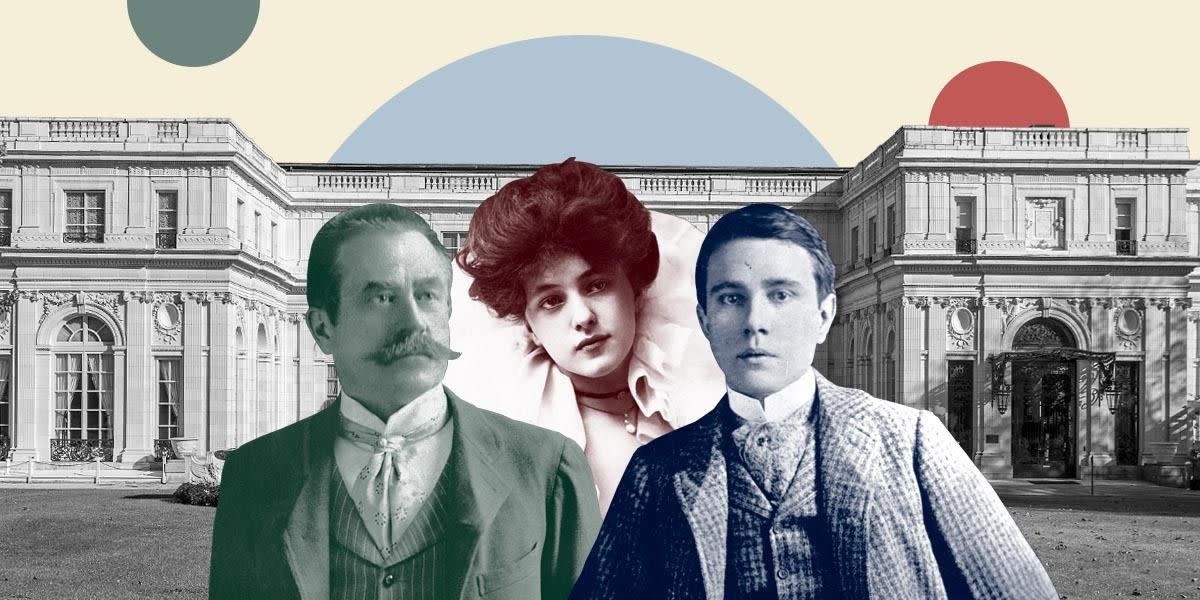The Crazy True Story Behind a Deadly Love Triangle Involving One of America's Most Famous Architects

- Oops!Something went wrong.Please try again later.
- Oops!Something went wrong.Please try again later.
- Oops!Something went wrong.Please try again later.
- Oops!Something went wrong.Please try again later.
"Hearst Magazines and Yahoo may earn commission or revenue on some items through the links below."
When design enthusiasts hear the name Stanford White, they likely recognize one third of illustrious architecture firm McKim, Mead & White. White enjoyed much professional success—namely, designing historic structures such as the Washington Square Arch, Newport's Rosecliff, and the circa-1890 version of Madison Square Garden. However, White's personal life was much darker; the architect was widely known for his predatory behavior towards young women. This behavior would ultimately come to overshadow—and, eventually, indirectly end—his life in twist of fate that sounds like something out of an F. Scott Fitzgerald novel. While we await his character's appearance in HBO's new series The Gilded Age, we take a look at the dark makings of the deadly love triangle between the renowned architect, model Evelyn Nesbit, and coal and railroad scion Harry Kendall Thaw.
Who Was Stanford White?
White, who was born in 1853, designed—and decorated—the Fifth Avenue residences of high-society families such as the Vanderbilts and the Astors. Although the architect did not come from money, his father, Richard Grand White, formed connections with many notable names in the design world, including Frederick Law Olmsted and Louis Comfort Tiffany.
White began his architecture career at just 18 years old, when he started working as an assistant to Henry Hobson Richardson. In 1879—when White was 26—he partnered with Charles Follen McKim and William Rutherford Mead to form McKim, Mead and White.
Predatory Behavior
White himself lived at 22 West 24th Street, in a multi-story apartment near Madison Square Park. One room in this home boasted a red velvet swing, fashioned with ropes made of ivy and suspended from the ceiling. According to the New York Times, White designed this swing so that underage girls—including model Evelyn Nesbit, who was 3o-plus years younger than him—"could entertain him."
These activities, it seems, were widely known: Celebrated writer Mark Twain once described the architect as "eagerly and diligently and ravenously and remorselessly hunting young girls to their destruction," adding that "these facts have been well known in New York for many years."
Evelyn Nesbit
In 1906, Nesbit revealed that five years prior—when she was 16 and White was 48 (and married)—he invited her to his apartment for dinner, gave her champagne, and seemingly drugged her, before raping her while she was unconscious. Despite this unconscionable start, Nesbit and White remained lovers for quite some time. The model discovered that White had a "little black book" containing the names of other young women he was having affairs with.
In 1905, Nesbit was married to Harry Kendall Thaw, the son of Pittsburgh coal and railroad baron William Thaw Sr. White is said to have warned Nesbit to steer clear of Thaw, as the architect had always disliked the scion, but had no concrete reasons behind his disdain. Eventually, after declining Thaw's many requests for her hand, Nesbit finally obliged. However, she had to tell Thaw the truth about what happened between her and White, given Thaw's obsession with female chastity.
As Paula Uruburu reports in the 2008 book American Eve: Evelyn Nesbit, Stanford White: The Birth of the "It" Girl and the Crime of the Century, while traveling through Europe together, Nesbit and Thaw partook in a tour of sites hand-picked by Thaw, all of which pertained to virgin martyrdom. The experience was, undoubtedly, miserable for Nesbit on many levels. Upon visiting Domrémy, France—the birthplace of Joan of Arc—Thaw left a message in the visitor's book, writing, "she would not have been a virgin if Stanford White had been around." Later in the trip, Thaw allegedly locked Nesbit in her room at the Katzenstein Castle before beating her with a whip and sexually assaulting her over the course of two weeks.
White's Murder
Approximately one year into their marriage, in 1906, Nesbit and Thaw went to a showing of Mam'zelle Champagne at the rooftop theater of Madison Square Garden, where White was also in attendance. During the final song of the musical, Thaw, who was standing just two feet from White, shot the architect three times in a row, instantly killing him while hundreds of people bore witness. The bullets mutilated White's face to the point that none of his features were recognizable.
According to witness reporters, Thaw proudly stood over White's dead body while shouting, "I did it because he ruined my wife! He had it coming to him! He took advantage of the girl and then abandoned her!" (Reports are mixed as to whether Thaw shouted "ruined by wife" or "ruined my life").
The crowd in the theater originally thought that the shooting may have been part of Mam'zelle Champagne, before soon realizing that this was not the case. Nesbit, who was not at her seat during the murder, asked her husband what had happened shortly thereafter, to which he responded, "It's all right, I probably saved your life." Nesbit and Thaw remained married for the next nine years, until 1915.
The subsequent trial for White's murder was deemed the "trial of the century;" it ended with Thaw being found not guilty by reason of insanity.
Follow House Beautiful on Instagram.
You Might Also Like

